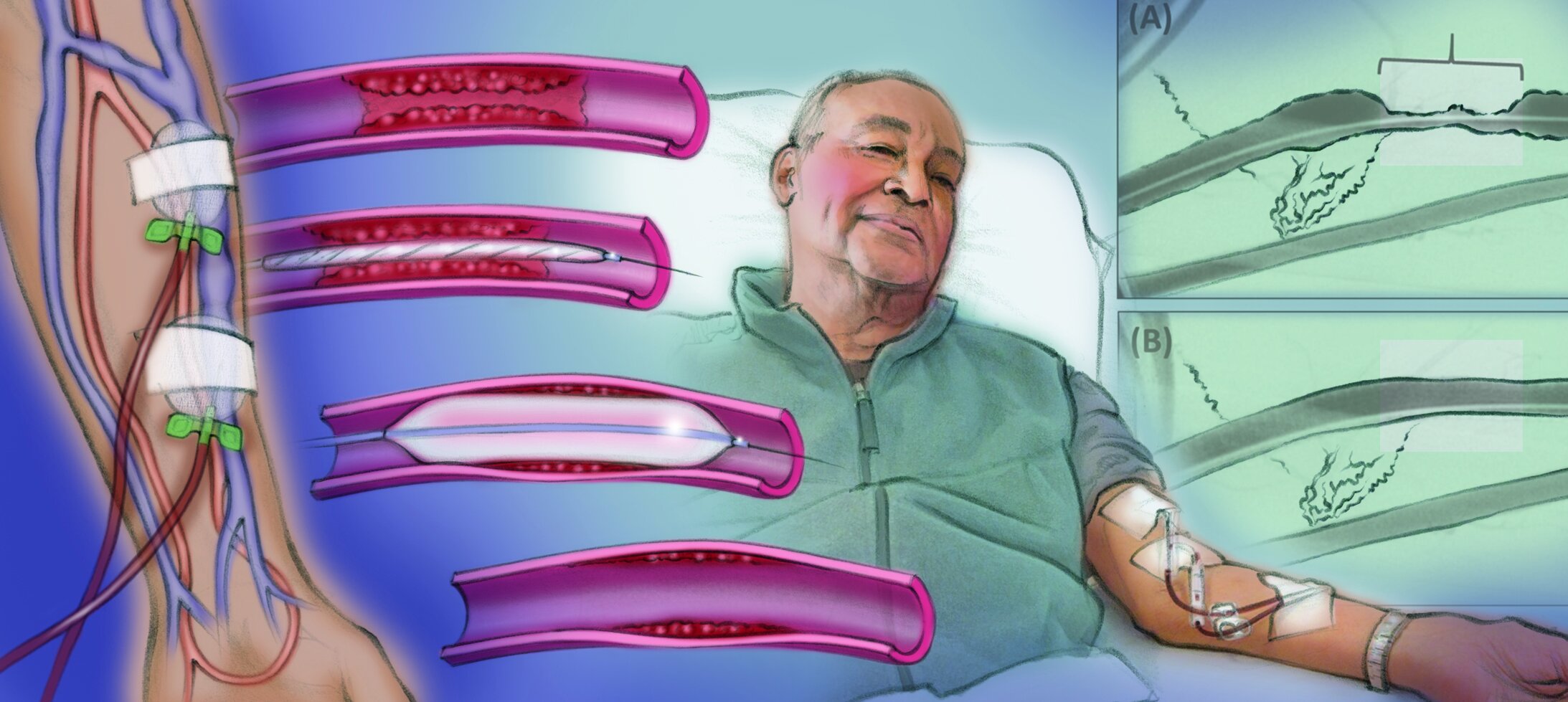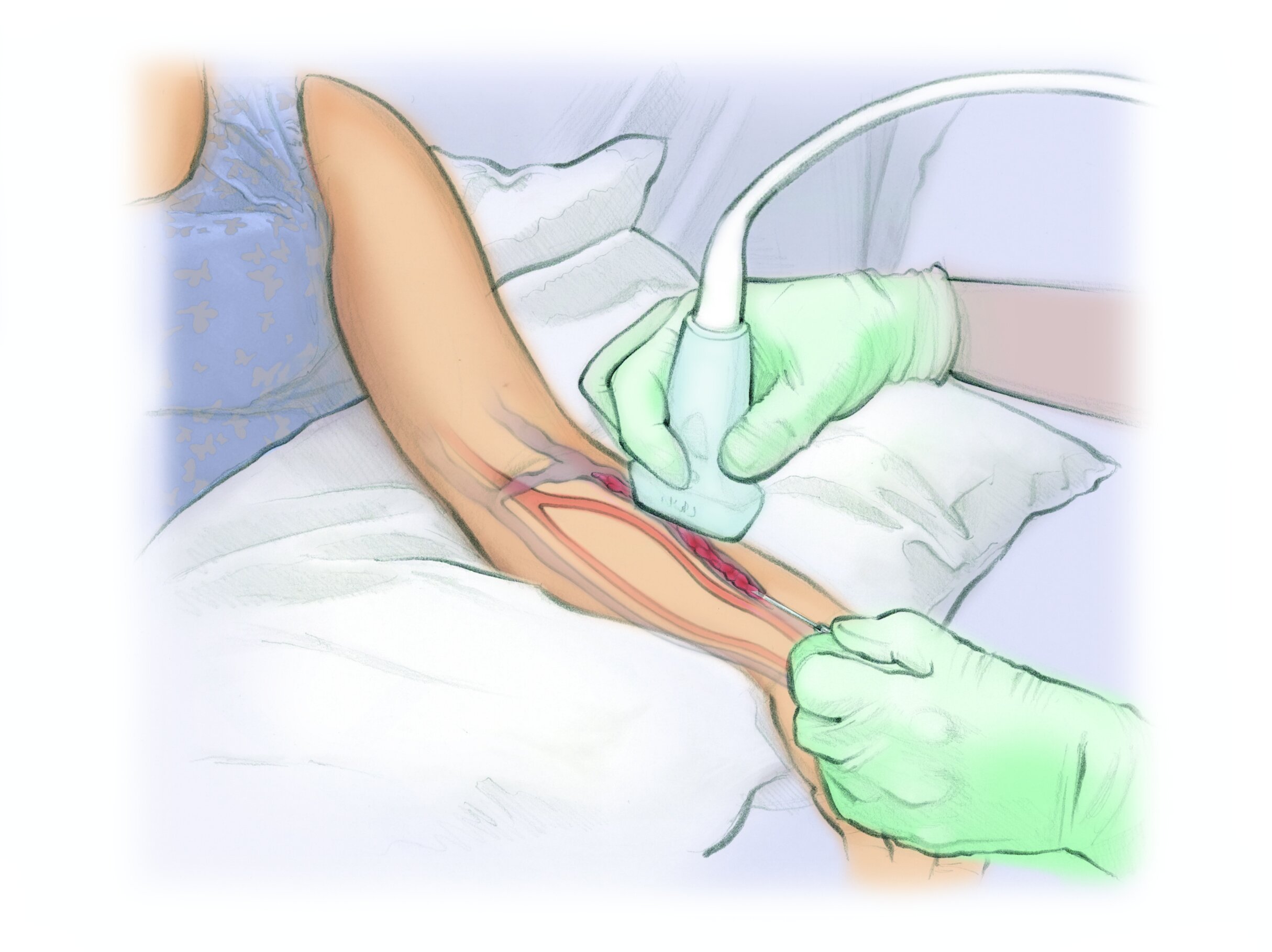Caring for your Dialysis Fistula or Graft
Procedures to keep dialysis fistulas and grafts working properly
When do you need a procedure for your dialysis fistula or graft?
A dialysis fistula is a direct connection between an artery and a vein, usually in the arm. A dialysis graft is similar, but the connection is made with a little tube under the skin.
The dialysis machine draws the blood from your body through plastic tubing. It filters out waste and water from your blood. Then the machine returns the clean blood to your body. To do this, the dialysis machine needs access to your blood through needles inserted into your dialysis fistula or graft.
When there are issues with dialysis, it may be necessary to do a procedure called fistulagram to find out what is wrong and fix it. Scarring or blood clots can narrow or block the fistula or graft or the blood vessels in the arm or chest. Symptoms can include low flows during dialysis, bleeding, pain, swelling, or difficulty using the fistula.
How is the procedure done?
The arm is cleaned. You will get medicines through your IV to relax you. After numbing your skin, your clinician will inject contrast dye into your fistula or graft to see if there are any problems. Then they may thread thin wires and tubes into the blood vessels in your arm using x-rays for guidance. They may use tiny balloons, tools or clot-dissolving medicine to open the blood vessels. Afterwards, the clinician will send you to dialysis or hold pressure to stop the bleeding.
Procedure for your Fistula or Graft
1. A thin wire and tube is threaded into the blood vessels near the fistula or graft.
2. Tiny balloons, tools, or clot-dissolving medicine are used to open the blood vessels.
3. The tiny tube and tools are removed and you can get dialysis as soon as you need it.
What are the risks?
3 in 100 cases
have bleeding
develop infection
experience an allergic reaction
have damage to blood vessels
Even rarer complications are shortness of breath or hand pain from a traveling blood clot.
There is also a risk that the procedure is unsuccessful. In this case, your clinician may insert a hemodialysis catheter so you can get dialysis.
What are the alternatives?
Alternative 1 Not having a procedure. If you depend on dialysis, you may need another way to get it. Otherwise, you may get sicker and could die.
Alternative 2 Hemodialysis catheter. This is a plastic tube that allows immediate dialysis. It is usually placed in a vein in your neck. The downside of hemodialysis catheters is that they have a higher risk of infection. They can also cause narrowing of the veins.
Alternative 3 Surgery to correct or create a new fistula or graft. This is an option of last resort, as you only have a limited number of places where fistulas and grafts can be created.
Alternative 4 Peritoneal dialysis. This is where a tube is placed in the belly and special fluid is put in the belly and then drawn out.




